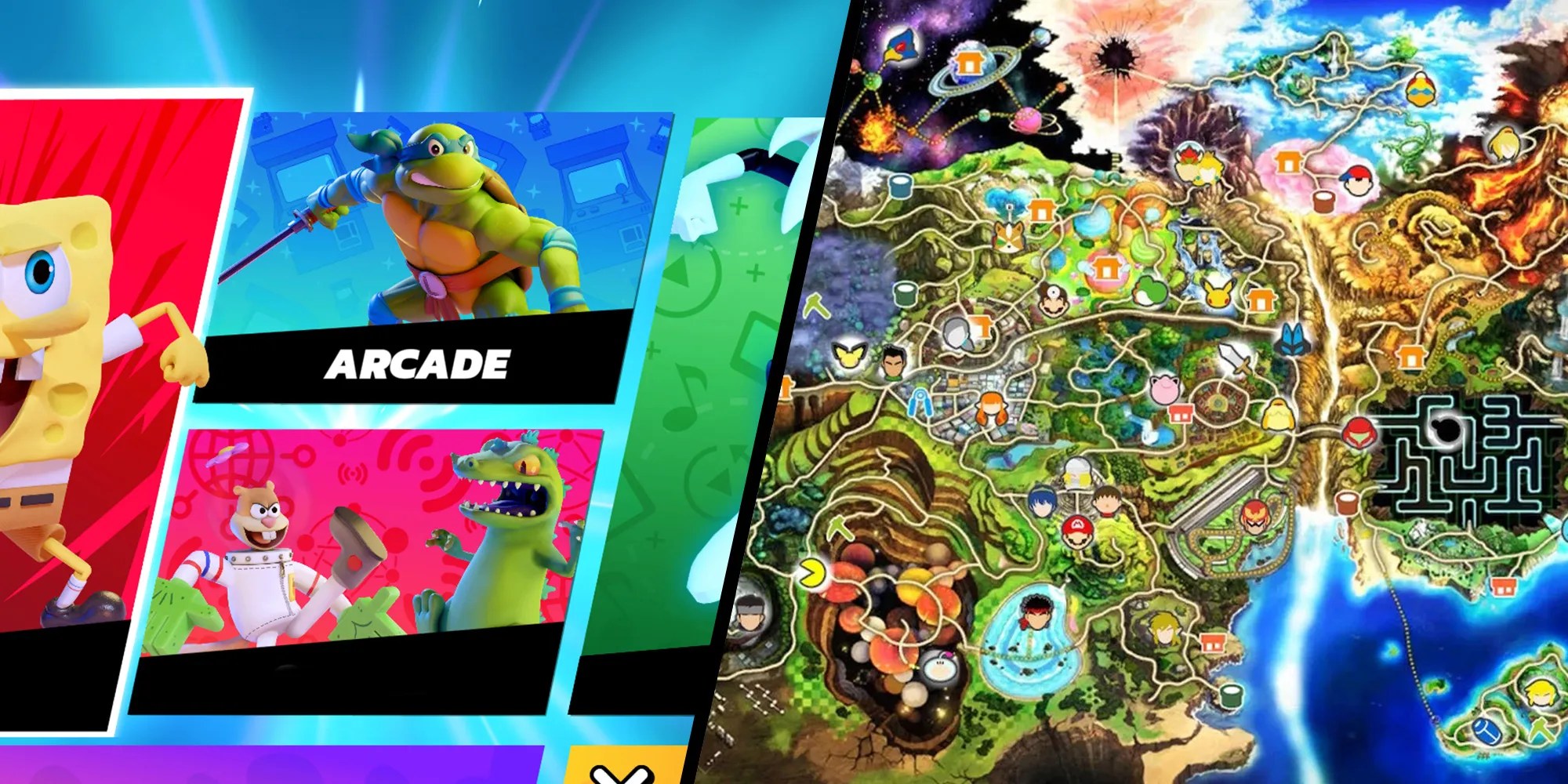TheSoulcaliburfranchise occupies a strange place in the realm of fighting games. It is the premier weapon fighter, and still endures today as the undisputed king of the subgenre. While it plays somewhat likeTekken, the mechanics tied to its face buttons are wholly unique, and smooth movement is prioritized in a way that most fighting games don’t match. To fans,Soulcaliburis a unique and well-designed take on 3D fighting games that doesn’t have any direct competitors. Even casual players find most entries intuitive and fun, and the series has leaned into this over its tenure.
After Capcom established itsCapcom Vs.series, Namco’sSoulcaliburwas the next to bring in big-name guests.Soulcalibur 2’s selection of Heihachi, Link, and Spawnis still legendary, even if they are stuck on different consoles. Meanwhile,Soulcalibur’s single-player modes are some of the best in the genre. Even though they lack the production values of a NetherRealm Studios story mode, they can match some ofSuper Smash Bros.’ single-player offerings. One of the best examples that should inspire more fighting games isSoulcalibur 3’s Chronicles of the Sword mode.

RELATED:The 10 Most Broken Characters In SoulCalibur History
Chronicles of the Sword is Soulcalibur 3’s Greatest Asset
While it seems likeSoulcalibur 3doesn’t have many issues on the surface, its console port had several key flaws. One was the lack of a true guest character beyondXenosaga’s KOS-MOS as custom parts, but a bigger issue affected gameplay. A console-only bug allowed for easy animation cancels, driving competitive players back toSoulcalibur 2. Viewed through a modern lens,Soulcalibur 3still holds up well, even with bugs making PvP hectic. It introduced theCreate-a-Soul custom character systemthat has become synonymous withSoulcalibur, as well as an in-depth arcade mode and an expansive mission mode with unique content.
However, perhaps the best reason to revisitSoulcalibur 3is the Chronicles of the Sword side mode. Serving as a different take onSoulcalibur 2’s Weapon Master mode and thepredecessor toSoulCalibur 6’s Libra of Souls, this surprising addition to home releases merged fighting gameplay with a strategy-RPG in the vein ofFire Emblem. Custom characters could be assigned unit types with different strengths and moved through 21 maps, leveling up and gaining gold, equipment, and skills all the while. Combined with a standalone story and several unlockable characters as incentives, Chronicles of the Sword remains a worthwhile reason to revisitSoulcalibur 3.

Chronicles of the Sword Bucks the Norms of Fighting Games
Because of how intimidating competition in fighting games is, a school of thought has emerged that the most popular fighting games have the widest casual appeal. With thefighting genre suffering from an arcade port templatethat skimps on extra modes, titles that go above their basic Arcade, Versus, and Training modes stand out. Finding solutions to keeping a focus on the core fighting gameplay, which itself often lends poorly to other genres, is an invaluable skill. That’s exactly whatSoulcalibur 3’s Chronicles of the Sword mode did.
While a five-to-10 hour story mode consisting of simple maps, custom characters, and RPG stats layered on top of regular gameplay doesn’t sound impressive, it is for a fighting game. Through smart repurposing of assets and mechanics, alongside some simple menu-based gameplay,Soulcalibur 3produced a single-player mode that is potentially timeless. It’s not hard to imagine Chronicles of the Sword being expanded to an entire game with more depth and variety, and yet it’s just another single-player mode in a title with many. WhileStreet Fighter 6brings backMortal Kombat Deception’s acclaimed Konquest adventure mode, smaller fighting games should look to classicSoulcaliburfor ways to set their single-player content apart.
MORE:Games To Play Now That Street Fighter 6’s Beta Is Over